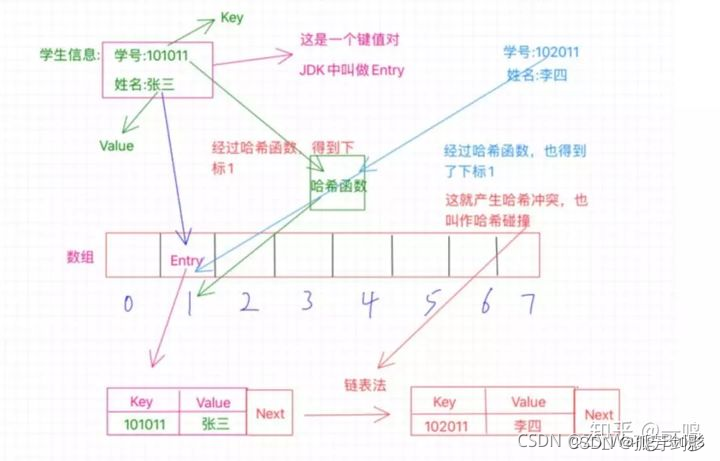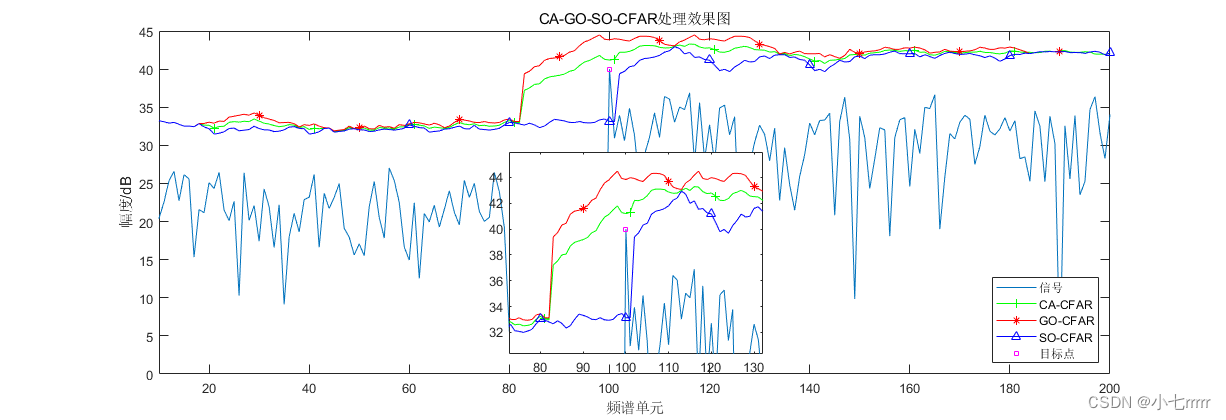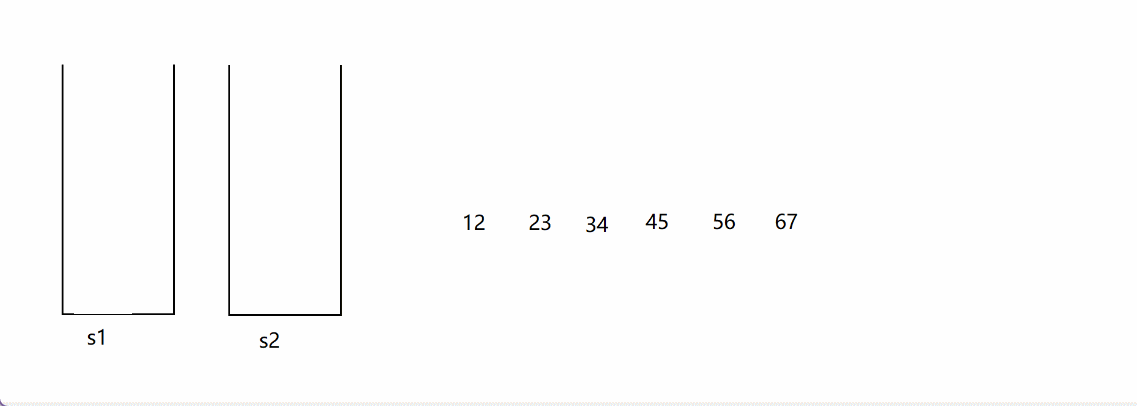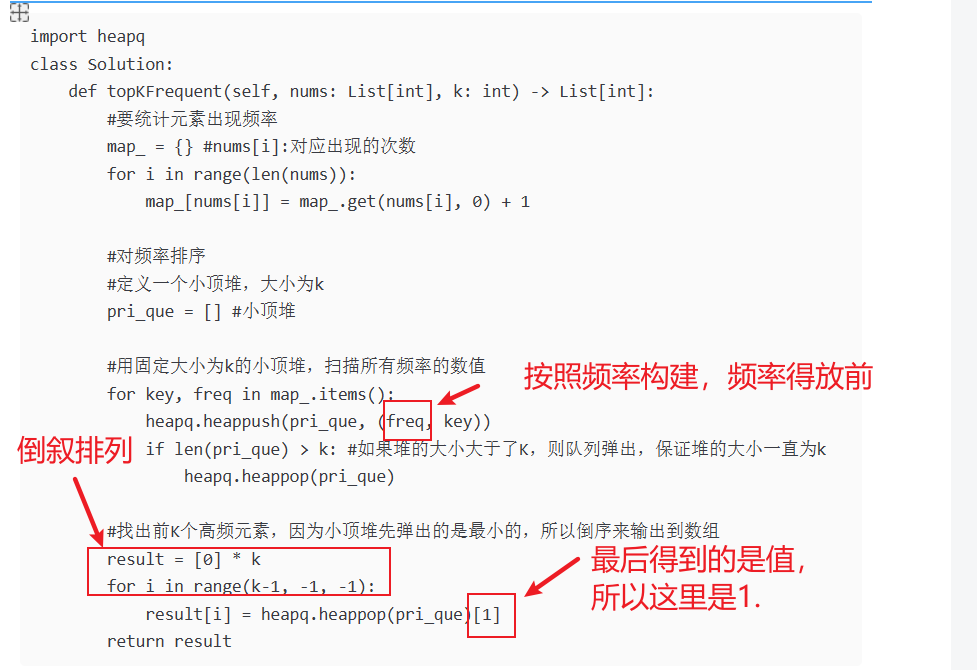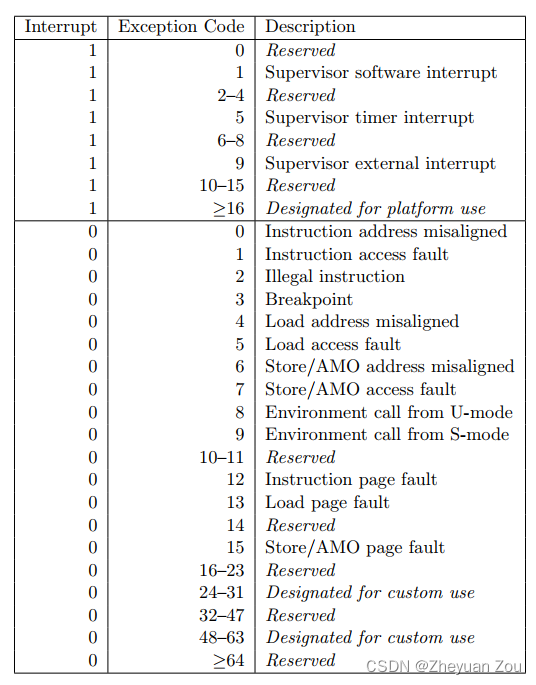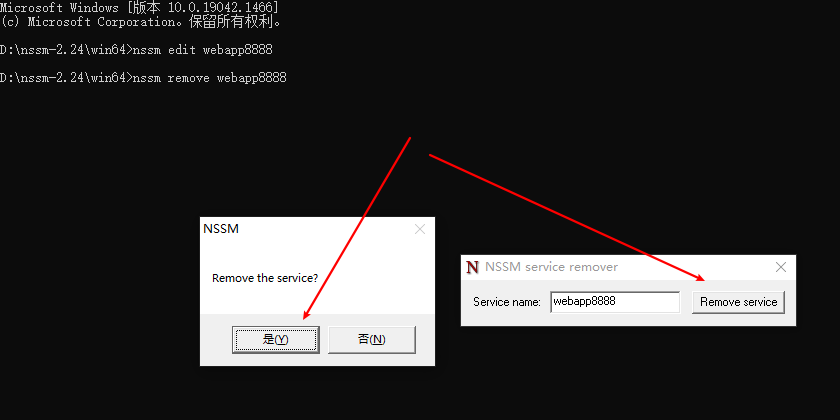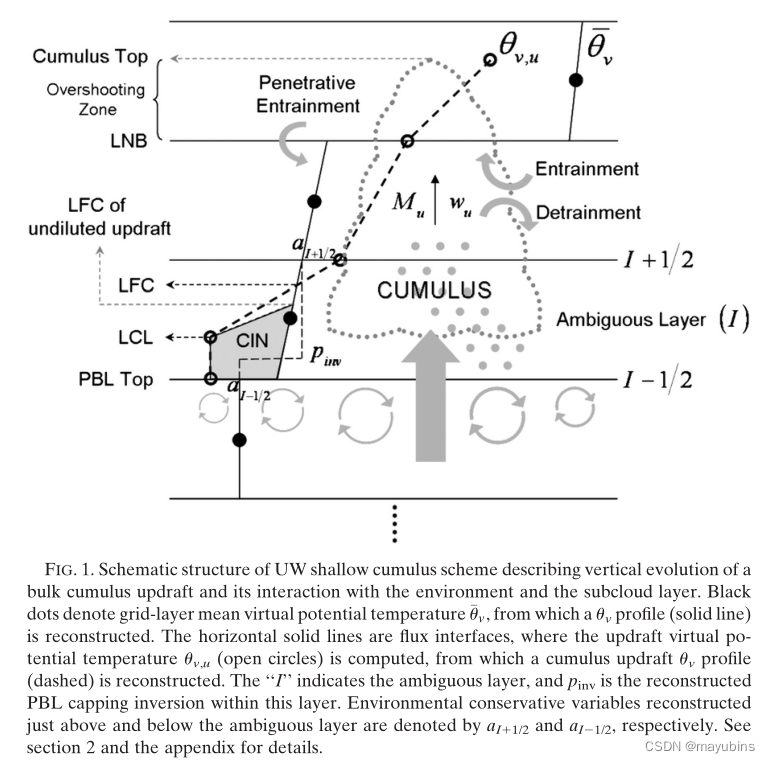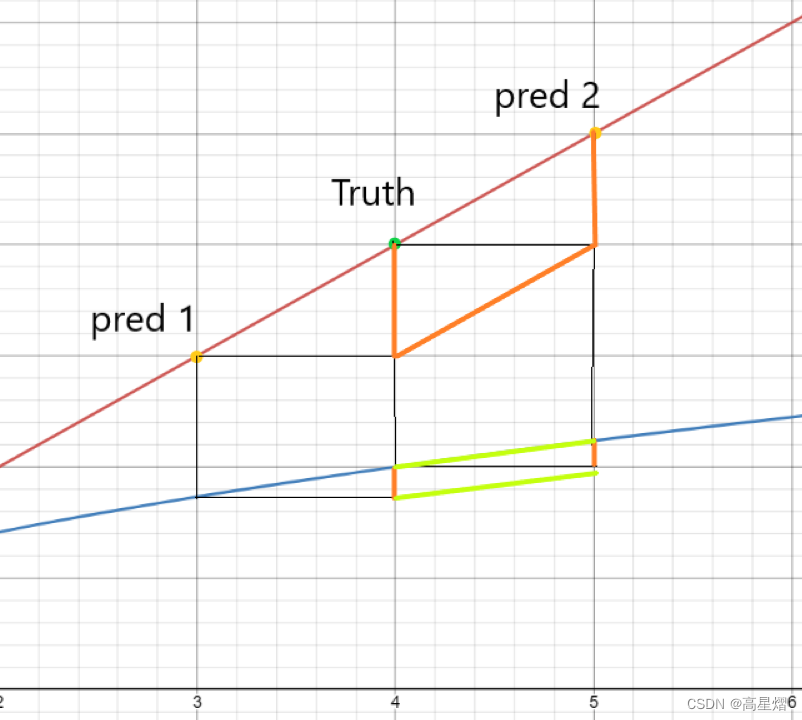文章目录
- 一、Arrays工具类
- 1.1 Arrays 类常用方法
- 1.2 对于 Comparator 比较器的支持
- 1.3 Arrays 的综合应用
- 1.3.1 应用一:数组的降序排序
- 1.3.2 应用二:根据学生年龄进行排序
- 二、Collections工具类
- 2.1 Collections 类常用方法
- 2.2 Collections 排序相关 API
- 2.3 Collections 的综合应用
- 2.3.1 应用一:类自定义比较规则
- 2.3.2 应用二:匿名内部类方式
一、Arrays工具类
Arrays工具类是数组操作工具类,专门用于操作数组元素的。
1.1 Arrays 类常用方法

举例:
public static void main(String[] args) {
int[] arr = {10, 2, 55, 23, 24, 100};
System.out.println(arr); // [I@4eec7777
// 1、返回数组内容的 toString(数组)
//String rs = Arrays.toString(arr);
//System.out.println(rs);
System.out.println(Arrays.toString(arr)); // [10, 2, 55, 23, 24, 100]
// 2、排序的API(默认自动对数组元素进行升序排序)
Arrays.sort(arr);
System.out.println(Arrays.toString(arr)); // [2, 10, 23, 24, 55, 100]
// 3、二分搜索技术(前提数组必须排好序才支持,否则出bug)
int index = Arrays.binarySearch(arr, 55);
System.out.println(index); // 4
// 返回不存在元素的规律:“-(应该插入的位置索引 + 1)”
int index2 = Arrays.binarySearch(arr, 22);
System.out.println(index2); // -3
// 注意:数组如果没有排好序,可能会找不到存在的元素,从而出现bug!!
int[] arr2 = {12, 36, 34, 25 , 13, 24, 234, 100};
System.out.println(Arrays.binarySearch(arr2 , 36));
}
注:sort() 方法默认对数组进行升序排序
1.2 对于 Comparator 比较器的支持
自定义排序规则:通过设置 Comparator 接口对应的比较器对象,来定制比较规则。

注:参数比较器对象是一个函数式接口,因此有两种方案:一种是匿名内部类的形式,另一种是比较类实现该接口的方法。
如果认为左边数据 大于 右边数据,返回正整数。
如果认为左边数据 小于 右边数据,返回负整数。
如果认为左边数据 等于 右边数据 返回0。
1.3 Arrays 的综合应用
1.3.1 应用一:数组的降序排序
方式一:匿名内部类
public class Test2 {
public static void main(String[] args) {
// 定义数组
Integer[] ages = {34, 12, 42, 23};
// 匿名内部类
Arrays.sort(ages, new Comparator<Integer>() {
@Override
public int compare(Integer o1, Integer o2) {
// 指定比较规则:
//if(o1 > o2){
// return 1;
//}else if(o1 < o2){
// return -1;
//}
//return o1 - o2; // 默认升序
return o2 - o1; // 降序
}
});
// 简化形式 1
Arrays.sort(ages, (Integer o1, Integer o2) ->{
return o2 - o1;
});
// 简化形式 2
Arrays.sort(ages, (o1, o2) ->{
return o2 - o1;
});
// 简化形式 3
Arrays.sort(ages, (o1, o2) -> o2 - o1 );
}
}
方式二:子类实现
public class Test2 {
public static void main(String[] args) {
Integer[] ages = {34, 12, 42, 23};
Arrays.sort(ages, new Comp());
System.out.println(Arrays.toString(ages)); // [42, 34, 23, 12]
}
}
class Comp implements Comparator<Integer>{
@Override
public int compare(Integer o1, Integer o2) {
return o2-o1;
}
}
1.3.2 应用二:根据学生年龄进行排序
public class Student {
private String name;
private int age;
private double height;
// set 和 get 方法省略
}
方式一:匿名内部类
public class ArraysDemo2 {
public static void main(String[] args) {
Student[] students = new Student[3];
students[0] = new Student("吴磊",23 , 175.5);
students[1] = new Student("谢鑫",18 , 185.5);
students[2] = new Student("王亮",20 , 195.5);
Arrays.sort(students, new Comparator<Student>() {
@Override
public int compare(Student o1, Student o2) {
// 自己指定比较规则
// return o1.getAge() - o2.getAge(); // 按照年龄升序排序!
// return o2.getAge() - o1.getAge(); // 按照年龄降序排序!
// return (int)o2.getAge() - o1.getAge(); // 不要这样写,因为 (int)(170.5-170.9) = 0
// return Double.compare(o1.getHeight(), o2.getHeight()); // 比较浮点型可以这样写 升序
return Double.compare(o2.getHeight(), o1.getHeight()); // 比较浮点型可以这样写 降序
}
});
System.out.println(Arrays.toString(students)); // 王亮...、谢鑫...、吴磊...
// Lambda 化简
Arrays.sort(students, ( o1, o2) -> Double.compare(o2.getHeight(), o1.getHeight()) );
}
}
方式二:子类实现
public class ArraysDemo2 {
public static void main(String[] args) {
Student[] students = new Student[3];
students[0] = new Student("吴磊",23 , 175.5);
students[1] = new Student("谢鑫",18 , 185.5);
students[2] = new Student("王亮",20 , 195.5);
Arrays.sort(students, new ComImp());
System.out.println(Arrays.toString(students));
}
}
class ComImp implements Comparator<Student>{
@Override
public int compare(Student o1, Student o2) {
return Double.compare(o2.getHeight(), o1.getHeight()); // 王亮...、谢鑫...、吴磊...
}
}
二、Collections工具类
Collections 工具类并不属于集合,其是集合操作工具类,是专门用于操作 Collection 系列集合元素的。
2.1 Collections 类常用方法

2.2 Collections 排序相关 API
排序方式 1:

注:本方式不可以直接对自定义类型的 List 集合排序,除非自定义类型实现了比较规则 Comparable 接口。
排序方式 2:

注:Collections 自定义排序功能指针对 list 集合,相同元素会保留。(set集合、map集合自带自定义排序)
举例:
public static void main(String[] args) {
List<String> names = new ArrayList<>();
// 1. 批量添加
Collections.addAll(names, "楚留香", "橙留香", "陆小凤");
System.out.println(names); //[楚留香, 橙留香, 陆小凤]
// 2. 打乱顺序
Collections.shuffle(names);
System.out.println(names);
// 3. public static <T> void sort(List<T> list):将集合中元素按照默认规则排序。
List<Integer> list = new ArrayList<>();
Collections.addAll(list, 1,21,13,24);
Collections.sort(list);
System.out.println(list); // [1, 13, 21, 24]
}
2.3 Collections 的综合应用
2.3.1 应用一:类自定义比较规则
Apple 类:省略 set 和 get 方法。
public class Apple implements Comparable<Apple>{
private String name;
private String color;
private double price;
private int weight;
/**
方式一:类自定义比较规则
o1.compareTo(o2)
*/
@Override
public int compareTo(Apple o) {
// 按照重量进行比较的
return this.weight - o.weight ; // 升序,List 集存储相同大小的元素会保留!
}
}
2.3.2 应用二:匿名内部类方式
public class CollectionsDemo02 {
public static void main(String[] args) {
List<Apple> apples = new ArrayList<>(); // 可以重复!
apples.add(new Apple("红富士", "红色", 9.9, 500));
apples.add(new Apple("青苹果", "绿色", 15.9, 300));
apples.add(new Apple("绿苹果", "青色", 29.9, 400));
apples.add(new Apple("黄苹果", "黄色", 9.8, 500));
// 方式二:sort方法自带比较器对象
Collections.sort(apples, new Comparator<Apple>() {
@Override
public int compare(Apple o1, Apple o2) {
return Double.compare(o1.getPrice() , o2.getPrice()); // 按照价格排序,价格相同会保留!!
}
});
System.out.println(apples);
// Lambda 方式化简
Collections.sort(apples, ( o1, o2) -> Double.compare(o1.getPrice() , o2.getPrice()) );
}
}
文章参考:Java入门基础视频教程,java零基础自学就选黑马程序员Java入门教程(含Java项目和Java真题)
